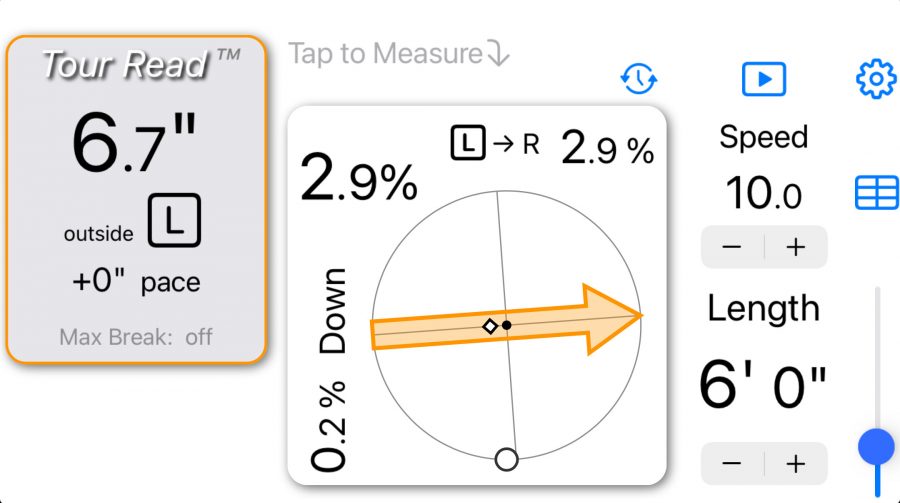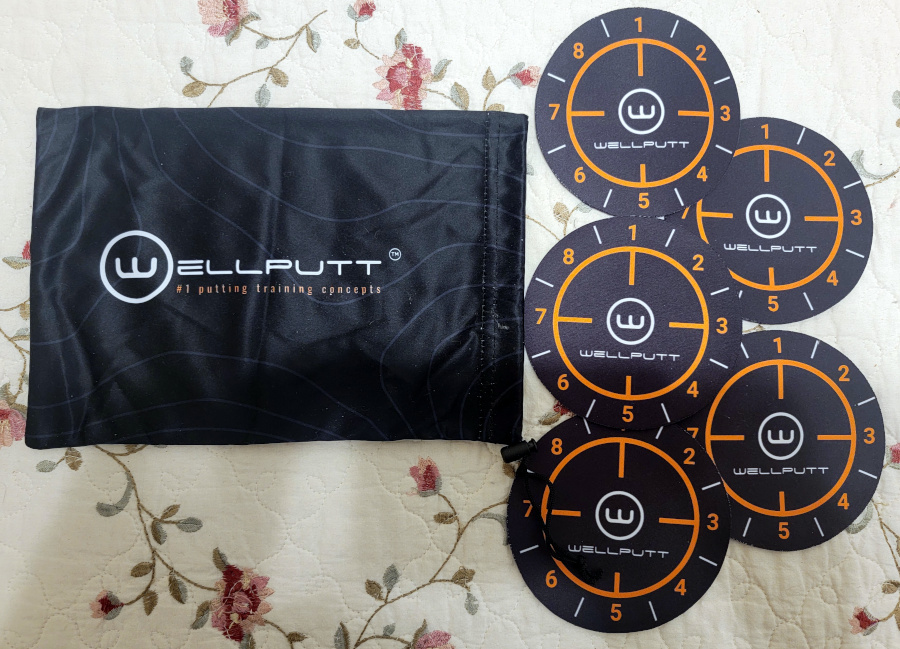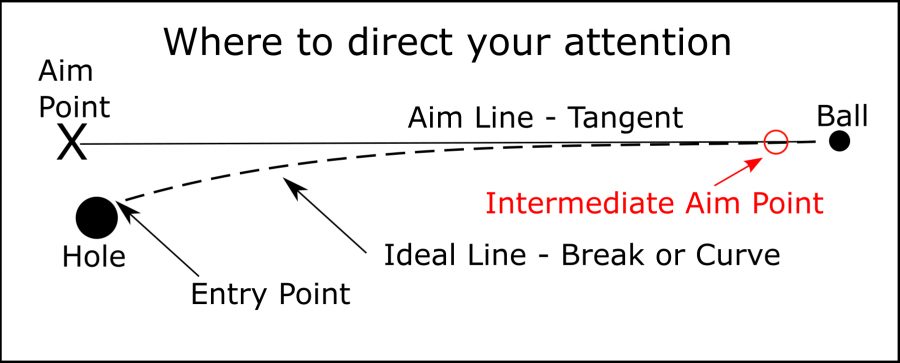Reading breaking putts and being good at it can significantly lower your score. Your control over speed and the putter face at impact might be perfect, but if you have misread the putt you have nothing. Zip. Zero. Let’s take a look.
I’m as guilty as anyone. I practice all winter hitting and measuring my metrics on tons of putts in a straight line.
There is an exception. That is with the addition of my PuttOUT AirBreak to my routine.
What do I do first thing in the Spring? I focus on reading breaking putts and practicing breaking putts.
Here is an example of the affect of break using stats of pro golfers.
Pro golfers make 90% of their 12 foot putts based on their start line if you give them a controlled surface. In other words, a flat straight putt on a good surface.
However, the make percentage on tour from 12 feet is 30%. Why is that?
Breaking putts change the equation. Green reading affects their make percentage.
Ralph Bauer – Tour Read app

Over the years, Ralph Bauer, a Canada-based putting coach who worked with app engineers, developed the Tour Read app.
Tour Read™ Golf has partnered with Odyssey Golf, the #1 Putter on Tour to create the latest version of the popular green reading app that is widely used on professional tours.
Why do I mention Tour Read?
Having a way to calculate break is essential to making more putts.
The Tour Read app measures the break for you. It also recommends the correct pace for the putt.
On shorter putts you can measure at two thirds of the way to the hole by laying your smart phone that is running the Tour Read app on the green.
On longer putts that have more than one break, you take more than one measurement and choose “average” in the app.
The object is to get good enough at reading breaking putts that you don’t need the app.
Ralph Bauer’s system
His system works by using the Tour Read app at first to help train yourself on gauging percentage of break and speed.
He also recommends visualizing the putt and the ball rolling in the hole.
By that I mean visualizing a clock face and where the ball would enter the hole. Example: Straight would be 6 o’clock. In the image, the Wellputt ghost holes only 8 markings so 5 would be straight in.

5 would be straight in.
Since you can’t use the app during league or in a tournament, it’s imperative that you learn to read breaking putts without the app.
He came up with a system based on figuring out how much a putt would break if the break was 1 percent slope.
The equation goes like this.
Number of paces to the hole times 2, minus 1.
Example: 4 paces to the hole. Times 2 is 8. Minus one is 7.
The answer is 7 inches of break if the break is 1 percent.
So, if the break is 2 percent the you would play 14 inches of break. In other words, 7 x 2 = 14. For 3 percent you would play 21 inches of break.
This assumes you have learned to read the percentage of break on putts and can play the correct pace or speed to roll the ball to the hole and about a foot past the hole.
Practice
I’ll go back to what I said at the top. You need to practice reading breaking putts.
If you don’t have some type of system like this you are guessing.

Here are a couple videos that might help you to read breaking putts and practice.
• Ralph Bauer putting coach and Tour Read Really good video
• David Orr – Putting Part 1 Excellent video (skip through the ads at the beginning)
• David Orr – Putting Part 2 Excellent video (skip through the ads at the beginning)
• Mike Shannon – Was Tiger Woods putting coach Great practice routine
• Brad Faxon – Green Reading One of the all time great putters on tour.
• Mike Shannon – This is pretty much my setup It’s kind of a geek video, but this is how I think.
So, do I practice mechanics too much? Probably not.
If I know my putter face is square at impact and I can start my ball line at the correct speed…that’s important.
However, if I can’t read breaking putts… I can make a perfect stroke and still miss the putt.
